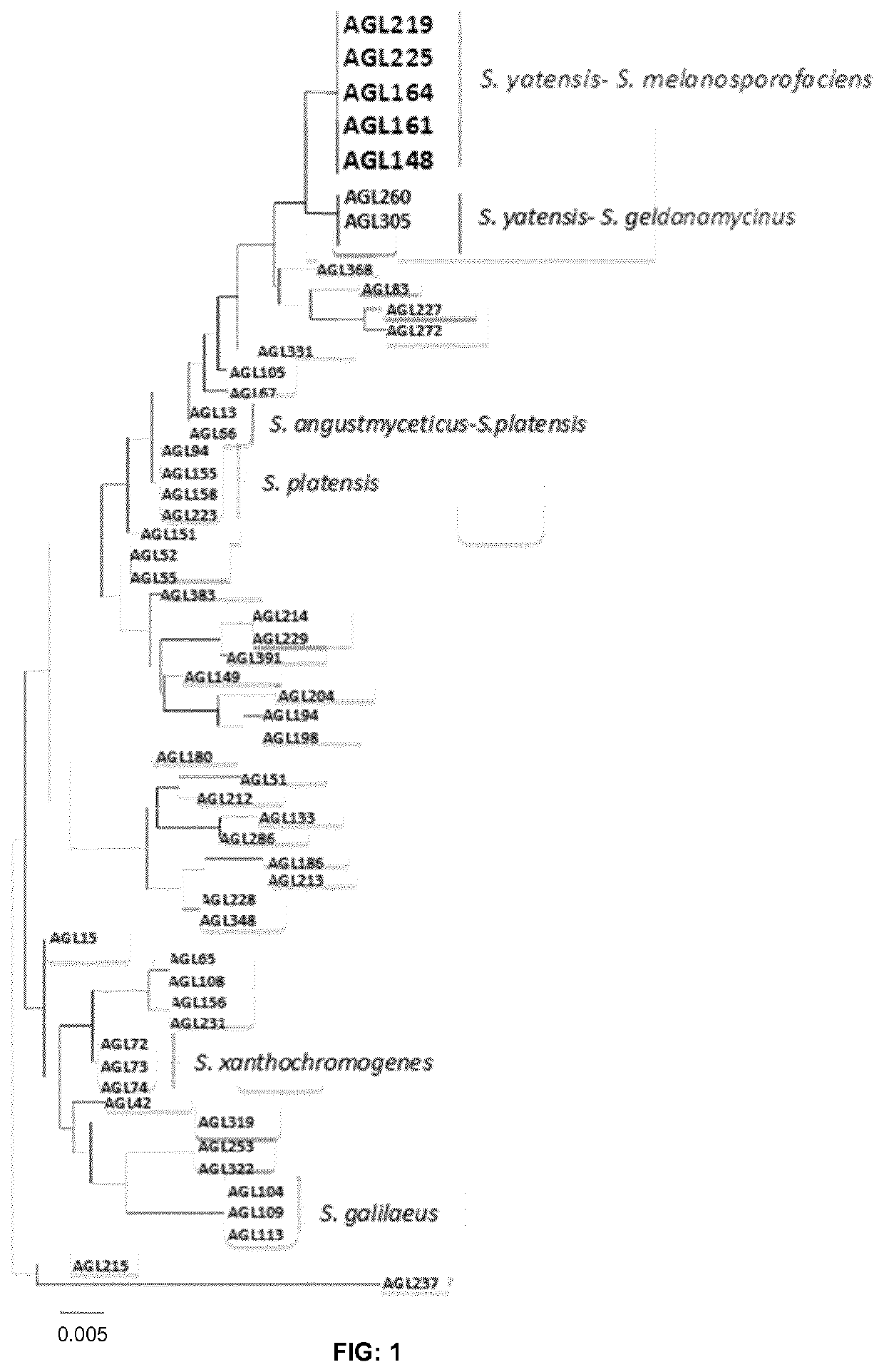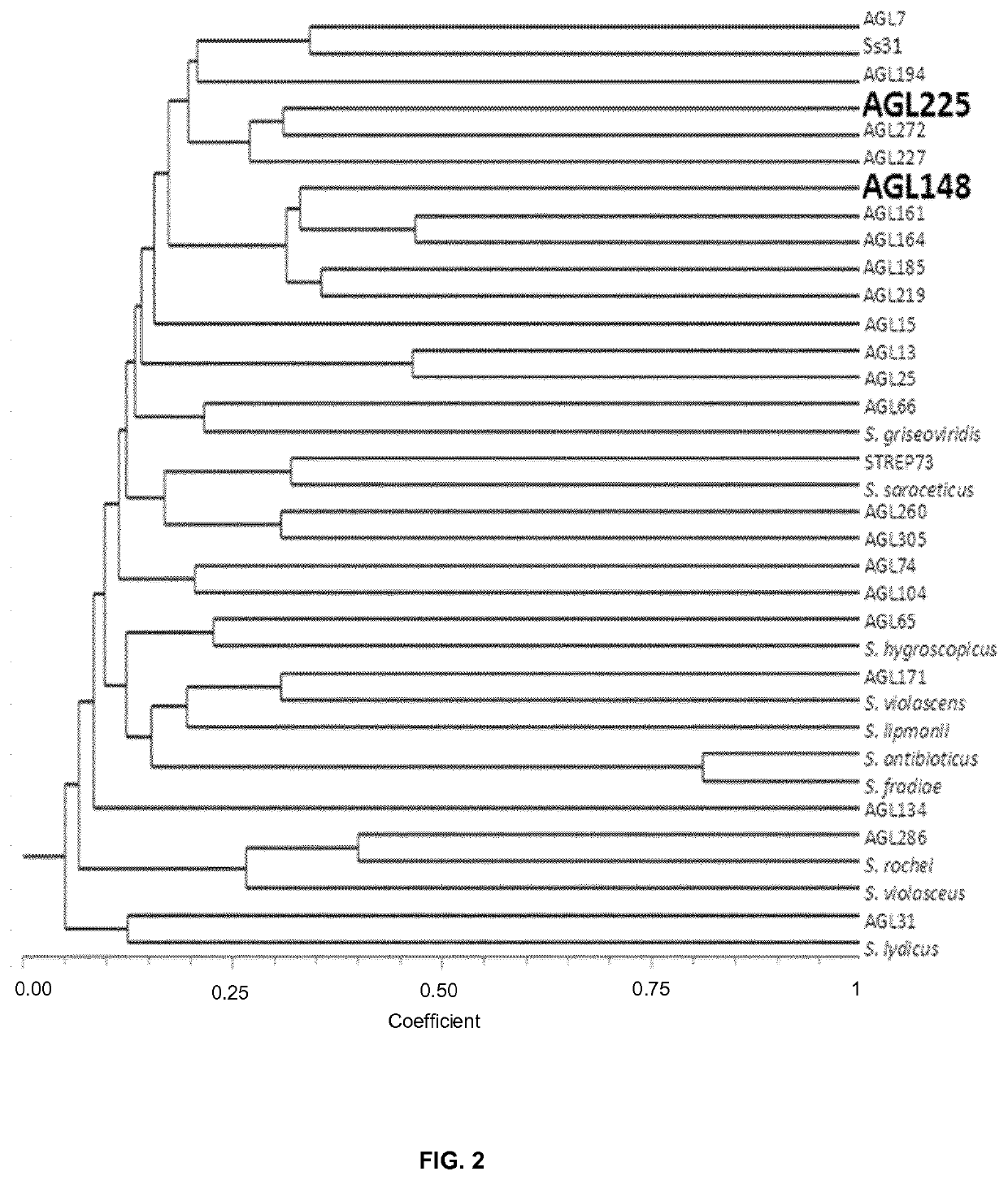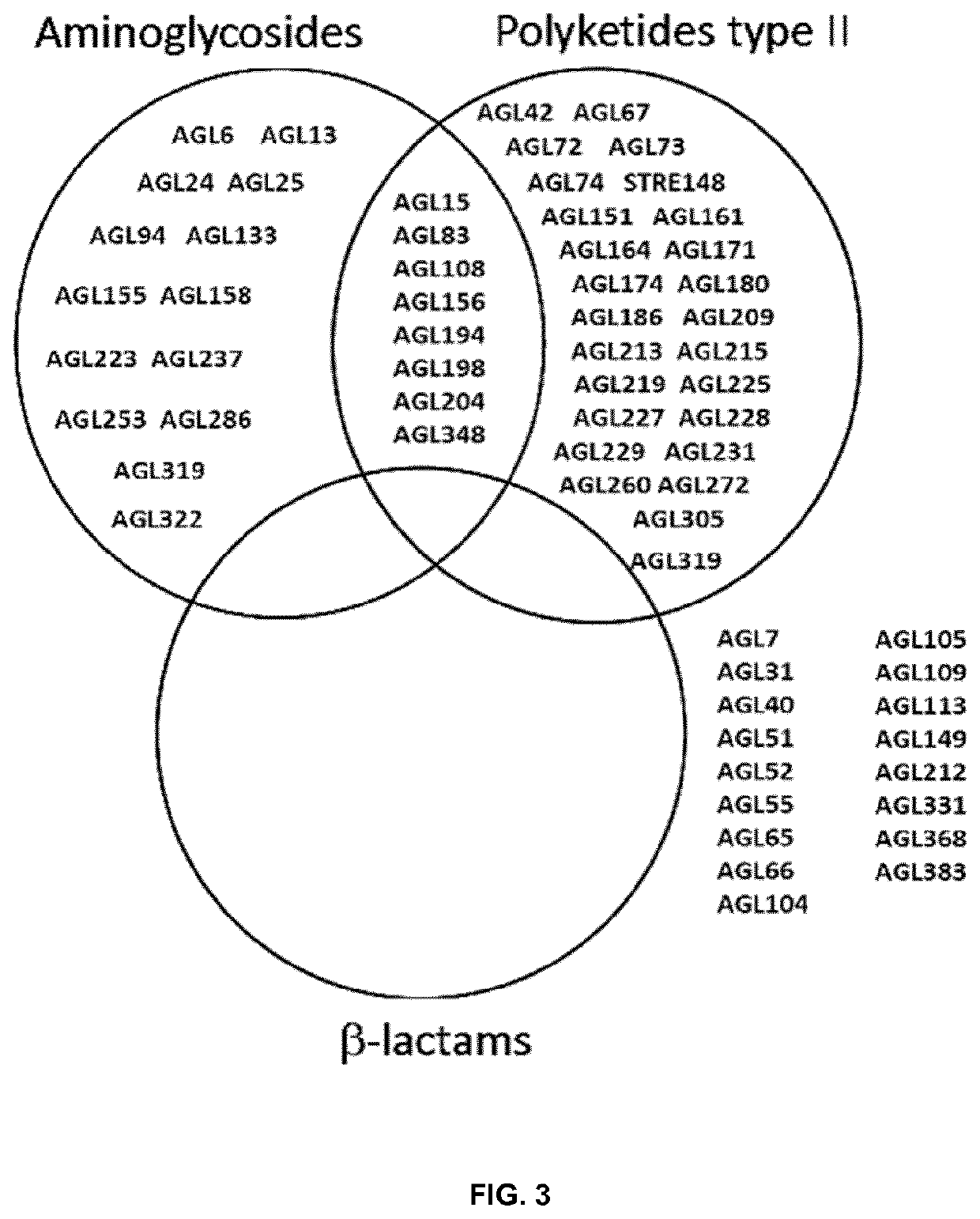Use of compositions containing streptomyces melanosporofaciens agl225 in controlling plant diseases
a technology of streptomyces melanosporofaciens and compositions, which is applied in the field of biological pest control, can solve the problems of reduced or variable disease control efficiency, less efficacy, and inability to formulate long-lasting compositions, and achieves the effects of broad pesticidal spectrum, convenient industrial processing, and convenient use for biological pest control
- Summary
- Abstract
- Description
- Claims
- Application Information
AI Technical Summary
Benefits of technology
Problems solved by technology
Method used
Image
Examples
example 2
on of Cultures of the Strains of the Invention and of Cell Free Extracts, for Obtaining Concentrates of Cellular Suspensions and Extracts from the Culture Medium
[0100]For the production of cells or metabolites of AGL225 and AGL148 strains, cultures were grown in ISP2 plates. To obtain a concentrated cell suspension or cell-free supernatant of cultures containing the fermentation metabolites of the Streptomyces of the invention, strains were cultured for 1 week in liquid ISP2 medium and incubated at 28° C. with shaking at 150 rpm. The material obtained in stationary phase was subjected to centrifugation at 8000 rpm for 15 min. The pellet containing cells can be resuspended in a small volume of phosphate buffer to obtain a concentrated cell suspension of 10*9 CFU / ml. The concentrated cell suspension can be used in further assays, like disease control in plants artificially infected with phytopathogens.
[0101]The supernatant from centrifugation, containing metabolites produced by cultur...
example 3
bial Activity of Cell-Free Culture Supernatants
[0102]The culture supernatants were assayed by the Bioscreen system (Labsystems) using 100 microwell plates. Each well of the plate contained 100 ul of supernatant (direct or at the desired dilution), 80 of Luria Bertani broth (2×) and 20 ul of a suspension of X. arboricola pv. pruni or spores of F. oxyporum. The results of inhibition were transformed into arbitrary units as AU ml−1. The AU were calculated as the inverse of the highest dilution that inhibited the growth of the pathogen (D) and multiplied by 40 (Parente et al. 1995). Table 2 shows the results of the six best strains. The supernatants of AGL13, AGL25, and AGL31 strains had antifungal activity against F. oxysporum, and the strain AGL286 has antibacterial activity. However, the supernatants of AGL148 and AGL225 strains were simultaneously antibacterial and antifungal.
TABLE 2In vitro antimicrobial activity (AU ml−1) against two pathogensof the culture supernatants of Strepto...
example 4
of Plant Defenses
a) Hypersensitive Response in Tobacco Plants (HR)
[0103]To demonstrate the ability to induce defense in plants a technique consisting of infiltrating leaves of tobacco plants was used. This method measures the hypersensitive response (HR) in a plant indicator against cells or extracts (Freeman and Beattie, 2008). Suspensions of 39 selected Streptomyces strains were infiltrated in the mesophyll of leaves of tobacco (Nicotiana tabacum). For the infiltration, a puncture was made in the reverse of the leave with the aid of a hypodermic needle. Infiltrations were performed in four different plants with a needleless syringe charged with the Streptomyces strain material. The plant pathogenic bacterium Pseudomonas syringae EPS94 at 108 cfu / ml, was used as positive control, and water as a negative control. After 24-72 h of incubation of the plants symptoms were observed. The HR response consisted of blocking necrosis limited between two ribs and a light brown desiccated tissu...
PUM
| Property | Measurement | Unit |
|---|---|---|
| temperature | aaaaa | aaaaa |
| temperatures | aaaaa | aaaaa |
| temperatures | aaaaa | aaaaa |
Abstract
Description
Claims
Application Information
 Login to View More
Login to View More - R&D
- Intellectual Property
- Life Sciences
- Materials
- Tech Scout
- Unparalleled Data Quality
- Higher Quality Content
- 60% Fewer Hallucinations
Browse by: Latest US Patents, China's latest patents, Technical Efficacy Thesaurus, Application Domain, Technology Topic, Popular Technical Reports.
© 2025 PatSnap. All rights reserved.Legal|Privacy policy|Modern Slavery Act Transparency Statement|Sitemap|About US| Contact US: help@patsnap.com



